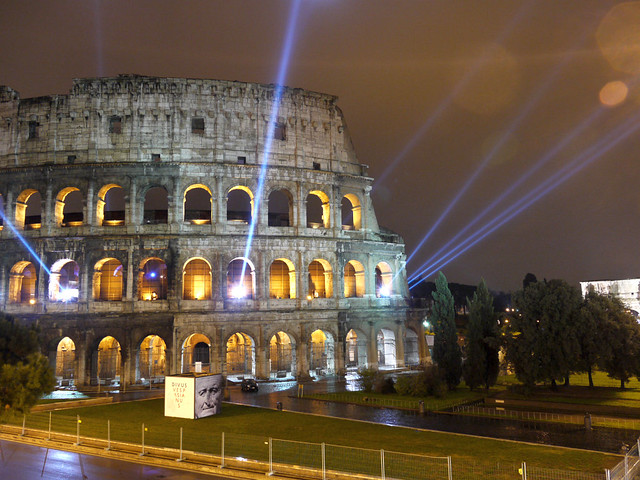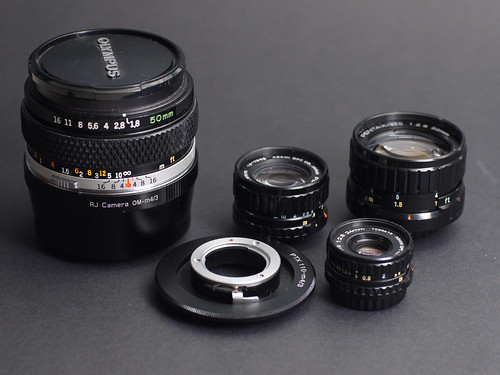As you can see its a reasonably vanilla looking basic lens adapter. To me there is not much difference between the various FD adapters on the market except if they do or do not have an iris engagement pin ring on the adapter, this does.
What does stand out immediately to me however is this adapter also has a tripod mount on the adapter.
Now to me thats something to mention!
I'd seen a few of these pop up in the in the past, but as this was so bloody cheap I thought I'd just get one.
One of the problems that you have with cameras is when they have a big lens mounted on them that does not have a tripod mount on the lens. Now normally lenes don't have a tripod mount on them but bigger lenses do. 200mm seems to be the turnaround point where they may or may not, but by 300mm they usually do.
That can become a slight problem for balance on the tripod (when you adjust the tripod the lens just goes 'whack' down from the cantilever). Also I feel that there is more likely to be vibration in the tripod + camera mount with the lens a cantilever on the camera that's on the tripod.
Back when I used 35mm gear I often wished there was a tripod collar for my EF100-300mm lens because of all the above reasons. When I was after the EF200mm f2.8 I really was surprised that it didn't have such. I guess its because on full frame 200mm is on the edge of hand holding and so many use it that way : thus no tripod collar needed.
I have an FD200mm f2.8 which is more or less the same design as the EF and when using it on the micro 4/3 (it being an effective 400mm) there are many times I'd like to have it on a tripod. When using my GH1 and that lens I've often thought it would be more well balanced that way too. So here it is on the adapter on the tripod...
and then with the camera mounted behind it.
which to me now feels much better.
Now in going around the internet forums people often seem to obsess with the effect of the weight of the lens on the front of the camera. The confident
This adapter will go a long way towards ameliorating those issues, and probably one more too (which is not an issue IMO).
The other issue which seems to be a source of anxiety among the
It seems that the stress of the mass of the lens on the mount may cause the lens to "tilt" and loose accuracy. Something like a few microns is all thats needed I read. This sort of incredible accuracy is the stuff which NASA would also like to obtain as well as makers of instruments such as the Hubble telescope. Microns of tilt mean that you will loose precious resolution from the system. No wonder people with large format cameras have been struggling with image clarity over the years. Such miserably flimsy wooden cameras as used by Ansel Adams could not have allowed him to produce anything of quality.
Such reports have been circulating the net recently. No evidence, just "a well trusted source". Probably its Jason who was being creative with his macBook Pro.
So, if the main thing you photograph is test targets on precision glass with your camera rigidly mounted then probably don't bother using anything other than native lenses. Some photographers may also require a "high speed lubricant", look for low temperature high speed in the specs. Always wear safety glasses in case something comes off.
Anyway, back to the adapter ... as I mentioned this adapter has a ring for 'engage' and 'disengage' of the FD lens iris. This has two benefits:
- you can mount the lens easier
- you can set the lens to (say) f5.6, "open" it to focus more accurately (than you could with it stopped down) and then close it again to take.
Compared to previous adapters I've tried with this system this one has kept the ring a bit more compact and doesn't get in the way of my fingers.
Please read this blog post about the operations of the iris and the lock / open ring. However what I said of relevence there was to engage and disengage the iris control this adaptor gets around the problem of needing to engage the FD iris coupler during the mounting process and the iris coupling is engaged by turning the ring after mounting.

To mount the adapter, first move the ring to "open". There is a red dot on FD lenses, so line this up with the red dot on the adapter. Then mount and turn the lens to engage normally.
At this point the iris is not yet engaged, to to engaged (and allow it to be stopped down) turn the ring on the outside of the adapter (which moves the engaging pin as in the diagram above).
The last point that I'd like to raise on this adapter is the tripod mount.
This is essentially a foot made of a single piece of alloy that is then bolted to the adapter with two small bolts (really small) that run up the center of the foot. The kit came with two spare bolts (should you loose / break one) and a 'patch' to cover the area if you decided to take the foot off.
The image to the left here shows the foot taken off and the bolts I mean.
The foot "keys" into a surface of the adapter so as to minimize twist, but if you had an accident with it, then its possible you could bend a bolt or shear one. So its nice to have some spares.
I'm intending to put a smear of fingernail polish on these bolt threads when I put it back together as a form of 'poor mans locktight'. This will actually be a good thing because:
* it will provide a firm bed for the threads to meet
* will prevent any metal expansion differences (the adapter body is alloy, the bold steel) which in winter can cause bolts to loosen
* keep them from vibrating loose over time.
such things are common in manufacture, but are absent here.
Actually it would perhaps be good to do the same with the three stainless steel threads on the front surface as I've found them to come loose after time too.
drawbacks
As you may guess, the entire system can't be rotated. So unlike proper collar designs (as on my FD300mm f4). I really like the FD lens tripod collar, it allows smooth and precise adjustment of camera alignment (vertical and horizontal) and is very nice on a mono-pod. The tension on the clamp is adjusted by rotating a knob on the side
and can be released by pulling it out popping open the clamp to allow you to quickly remove the lens from the tripod (if you decide to go hand held or pack it away leaving the clamp on the tripod.
This is something this adapter can't do ... but then you previously couldn't mount the lens on a tripod anyway ;-)
UPDATE: usage observations
Today out in the field with it I was attempting a HDRI and found that the camera was 'moving' around in the horizontal plane. I checked the tripod and found that it was actually the adapter foot moving on the mount. So I'll need to add some locktight there too. The keying of the foot into the adapter is not precise enough.
Then I discovered that I forgot to 'engage' the aperture stop down. So I ended up taking everything at f4 even though I was intending f5.6 ... not a "big" deal but a lesson. Get used to an adapter and have that in your routine so as to not introduce to many factors into your routine.
conclusion
So there you have it. A low priced adapter (in this case for FD) to put your longer lenses onto your micro4/3 camera and mount the lens on the tripod (rather than mounting the camera onto the tripod). For the price I reckon you just can't loose.Now if precision is your gig (and it might not be) then I reckon you can't go past the adapters made by ciecio7 who sells on ebay (and aside from having bought his adapters and thought them great have no financial kickbacks or interests). His stuff is top shelf, machined from a single bit, he even declares the materials his adapters are made from!
His adapters like this one are $90, so you get what you pay for (in this instance higher quality ;-)















 In this variant particular of the "
In this variant particular of the "

















































